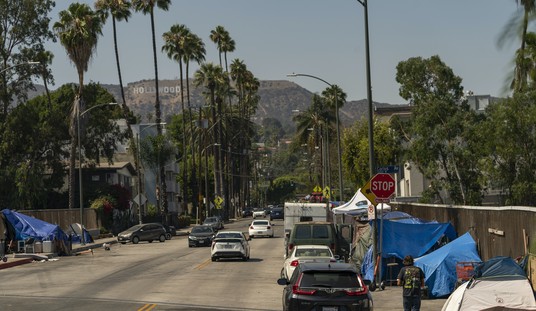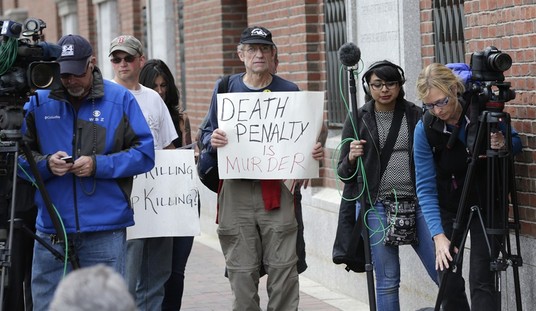Trond Berntsen was not only the stepbrother of Norway’s Crown Princess Mette-Marit. He was also an off-duty policeman and former amateur boxing champion who was working as a security guard on Utoya island that fateful day when Andres Behring Breivik, dressed as a policeman, blew away as many people as he possibly could — including Berntsen.
Berntsen was by all accounts a brave man who made a heroic effort to protect his charges. Alerted to the fact that Breivik was acting suspiciously, Berntsen was one of the first to encounter and confront the gunman, although not before Berntsen had managed to save his own 10-year-old son by pushing him to safety in some sheltering bushes. But even bravery is sometimes powerless to save a person facing a determined murderer who is armed — because Berntsen, the real policeman, was not.
This lack of defensive weaponry is only one of several puzzling and frustrating facts about the actions of the Norwegian authorities that day. Because Norway has one of the few police forces in the world forbidden to routinely carry firearms, an armed SWAT team was summoned to the island. But no helicopter was available to transport them, and as a result the potential defenders were forced to travel the 28 miles by road and then to commander a boat that took on water because it could not handle their heavy equipment. Extremely precious time was lost.
But that was not all. The government buildings targeted in the initial bombing had light security, despite the fact that the offices of the Norwegian prime minister and his administration are located there. And it seems outrageous that the longest prison term mass murderer Breivik could receive is 21 years, no matter how many people he killed. Even if he were to be convicted of crimes against humanity, the maximum sentence would only be 30 years, although there is a provision in Norwegian law for imprisonment to be extended for a series of 5-year periods if it were determined that Breivik remained dangerous.
To us in this country it seems nearly preposterous that a nation could function with a police force and a penal system with so few teeth. But until now, it did not seem so strange to most Norwegians. Their kinder, gentler system of law and order was a pleasant philosophical choice that had cost them very little, and of which they were quite proud. In a largely homogeneous country, and with a long tradition of an orderly and law-abiding citizenry, things had mostly gone well since the death penalty had been abolished in 1902 for peacetime use and for wartime use in 1979.
This 2010 article about Norwegian prisons is enough to make one weep with envy of the prisoners. Wide-screen TVs in each IKEA-esque room, scenic bucolic settings, guards without guns. As Charles Lane, who calls the system “gentle justice,” writes, “The Norwegian Correctional Service’s Website makes no mention of punishment, but does refer to ‘services’ to which inmates are ‘entitled.'”
But note the tiny number of convicts, just 3,300 in a country of about 5 million inhabitants. Lane quotes a prison warden in Norway as saying, “If you treat people badly, they will behave badly. Anyone can be a citizen if we treat them well, respect them, and give them challenges and demands.”
Most Norwegians thus far have had no compelling reason to believe that this was false. Their society has continued to be remarkably peaceful, with an extremely low rate of murder, and despite increasing theft and rape rates during the last few years, both attributed largely to immigrants.
It is as though the modern Norwegian system had evolved in the absence of natural predators, and never really developed defenses against them. No doubt Breivik was familiar with the vulnerabilities of Norway’s police and population, and knew they would be unarmed. He exploited this fact in a fiendishly clever manner by using the first explosion as both a diversion and an excuse for arriving on the island dressed as a policeman carrying a firearm, ostensibly to help with security after the bombing. The uniform was a brilliant deception because it led the young people to trust him — despite his weapon — when he told them to gather round, and heightened the element of stunned surprise which may have made his victims more slow to respond than they might otherwise have been.
Because Breivik managed to kill so many unarmed people, and because the Norwegian police do not ordinarily carry weapons, some people have wrongly assumed that its population is completely unfamiliar with firearms and how to use them. But Norway has a surprisingly strong tradition of gun use for sport. While it is true that fully automatic weapons and certain caliber handguns are banned, and concealed carry is not allowed, Norwegians have a robust number of hunting enthusiasts and recreational shooters who own semi-automatic rifles and shotguns plus some handguns — all of which, however, are tightly regulated by the government.
And then there’s the Norwegian Army. No, that’s not an oxymoron; the country has one, as well as an ancient military tradition. After pacifist leanings during the 30s and a lack of preparedness at the start of WWII, Norway’s five-year occupation by the Germans was a searing experience for its citizens. On liberation, there was broad support in Norway for the idea that the country needed to maintain an armed force of a size sufficient for self-protection. As a result, Norway joined NATO, and even operates a current draft, although only about a quarter of its men actually end up serving.
So between military training and sport, the society is hardly unfamiliar with guns, although firearms are rarely used for crimes or in self-defense. Norwegians have been shaken to the core by Breivik’s violent acts; already there have been a sizable number of calls for the reinstatement of the death penalty or life in prison. Will there also be a public outcry to arm Norway’s police and/or security guards? What percentage of the population feels this way, and how many will continue to press for a hardening of security there?
How far the backlash to native son Breivik’s almost unthinkable violence will take Norway from its present system of “gentle justice” and weapons-free police is impossible to predict. So far the reaction seems quite limited, but that could change. The outcome is probably dependent on whether Breivik’s violence turns out to be an utter anomaly, as devoid of sequelae (other than grief) as it was of antecedents, or whether it turns out to have been a grim harbinger of more violence to come in Norway.









Join the conversation as a VIP Member